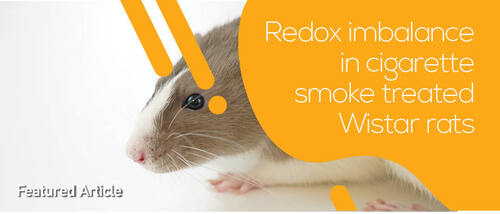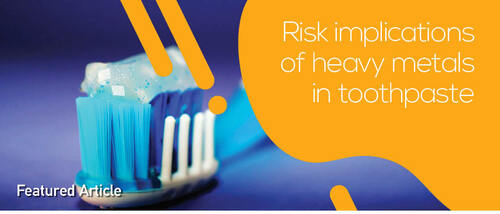How to submit
Public Health and Toxicology manuscripts are reviewed with the understanding that they:
Public Health and Toxicology uses the online Editorial System for manuscript submission, peer review and editorial handling. Submissions received by email will not be considered.
Within the submission system, the corresponding author will have the ability to upload a cover letter and will also be able to select pre-identified statements related to the originality of the work, the potential conflicts of interest, authorship, and the role of funding sources in the preparation of the manuscript. Additional information may be requested by the Editorial Board to ensure the integrity and ethics of the manuscript.
Correspondence
Receipt of a manuscript is acknowledged via automated email from the online submission system. This includes a manuscript tracking number, which should be provided in all correspondence with the editorial office with regard to that manuscript. We kindly request that only the corresponding author is in contact with the editorial office on behalf of all of the manuscript's authors. Only one corresponding author can be listed per manuscript.
Author Statements
During submission, the authors will need to accept and confirm the following conditions:
1) All authors have participated in the preparation of the manuscript and meet the ICMJE criteria for authorship (all authors must have read and agreed to its content and are accountable for all aspects of the manuscript).
2) The manuscript has not been published previously in part or in whole and is not currently submitted for publication in another journal
3) Choice of licensing options (More information about licensing options can be found here)
4) Data availability and sharing options (More information about data policies can be found here)
5) Funding Statement
6) Special Issue
ICMJE recommendations
The ICMJE recommends that authorship be based on the following four criteria:
Substantial contributions to the conception or design of the work; or the acquisition, analysis, or interpretation of data for the work.
a. Drafting the work or revising it critically for important intellectual content.
b. Final approval of the version to be published.
c. Agreement to be accountable for all aspects of the work to ensure that questions related to the accuracy or integrity of any part of the work are appropriately investigated and resolved.
d. In addition to being accountable for the parts of the work he or she has done, an author should be able to identify which co-authors are responsible for specific other parts of the work. In addition, authors should have confidence in the integrity of the contributions of their co-authors.
Suggested Reviewers
Authors may suggest reviewers who are qualified to peer review their manuscript, provided that they have not collaborated closely in the near past and that they are not from the same institution. Suggested reviewers invited will not be notified of the author/s that suggested them.
Non-Preferred Suggested Reviewers
Authors may also suggest reviewers who are not preferred to review their manuscript. While the author's suggestions are taken into account, the Editorial Office reserves the right to handle peer review at its discretion.
Pre-prints
European Publishing encourages its authors to submit manuscripts that have been previously published as preprints. Authors publishing in our journals may have shared their work ahead of submission, as well as during the journal's peer review process on repositories or preprint servers, as long as the server does not impose restrictions upon the author's full copyright and re-use rights. Preprints are not considered prior publication, but it is essential that the preprint submitted in our journals is not under consideration by any other journal.
In order to make sure that correct attribution is given to the original source, we suggest that the preprint is listed within the acknowledgement section of the manuscript and the full citation is included in the reference list.
If the manuscript is accepted for publication, authors are encouraged to link their preprint with the published article, in order to enable their readers to access the peer-reviewed version. Preprints that undergo a peer review process through Public Health and Toxicology will be published under the same licenses used for all the articles in the journal (for more information on the licenses, please check the Open Access tab).
Manuscript Handling Process
Plagiarism
Upon receipt of the submission, the manuscript is checked using the plagiarism identification software iTHENTICATE and the report is provided to the handling editor to assess within the initial internal review process.
European Publishing investigates into all cases of publication misconduct and as a member of CrossCheck’s plagiarism detection initiative it uses plagiarism detection software. The software checks submissions against millions of published research papers, documents on the web, and other relevant sources. If plagiarism or misconduct is found at the time of submission the manuscript is rejected immediately. Should for some reason plagiarism or misconduct be identified after publication, the case will be assessed and if needed immediate actions will be taken, including but not limited to the retraction of the article, publication of a retraction notice, etc.
Initial Internal Review
Assigned editorial board members and handling editors make an initial decision on the manuscript, based on the manuscript's content, novelty, sample size, manuscript preparation and quality in light of the other manuscripts currently under peer review. At this stage, the journal may either send the manuscript out for double-blind peer review, may reject the manuscript without peer review or may send the manuscript back to authors for adjustment before it is evaluated again.
Double-Blind Peer Review
Should the manuscript pass this initial phase of the internal review, external double-blind peer reviewing is then performed (More information about the review process can be found here).
- are original
- are not under consideration by any other publisher
- have not been previously published in whole or in part
- have not been previously accepted for publication
- will not be submitted elsewhere until a decision is reached regarding their publication
Public Health and Toxicology uses the online Editorial System for manuscript submission, peer review and editorial handling. Submissions received by email will not be considered.
Within the submission system, the corresponding author will have the ability to upload a cover letter and will also be able to select pre-identified statements related to the originality of the work, the potential conflicts of interest, authorship, and the role of funding sources in the preparation of the manuscript. Additional information may be requested by the Editorial Board to ensure the integrity and ethics of the manuscript.
Correspondence
Receipt of a manuscript is acknowledged via automated email from the online submission system. This includes a manuscript tracking number, which should be provided in all correspondence with the editorial office with regard to that manuscript. We kindly request that only the corresponding author is in contact with the editorial office on behalf of all of the manuscript's authors. Only one corresponding author can be listed per manuscript.
Author Statements
During submission, the authors will need to accept and confirm the following conditions:
1) All authors have participated in the preparation of the manuscript and meet the ICMJE criteria for authorship (all authors must have read and agreed to its content and are accountable for all aspects of the manuscript).
2) The manuscript has not been published previously in part or in whole and is not currently submitted for publication in another journal
3) Choice of licensing options (More information about licensing options can be found here)
4) Data availability and sharing options (More information about data policies can be found here)
5) Funding Statement
6) Special Issue
ICMJE recommendations
The ICMJE recommends that authorship be based on the following four criteria:
Substantial contributions to the conception or design of the work; or the acquisition, analysis, or interpretation of data for the work.
a. Drafting the work or revising it critically for important intellectual content.
b. Final approval of the version to be published.
c. Agreement to be accountable for all aspects of the work to ensure that questions related to the accuracy or integrity of any part of the work are appropriately investigated and resolved.
d. In addition to being accountable for the parts of the work he or she has done, an author should be able to identify which co-authors are responsible for specific other parts of the work. In addition, authors should have confidence in the integrity of the contributions of their co-authors.
Suggested Reviewers
Authors may suggest reviewers who are qualified to peer review their manuscript, provided that they have not collaborated closely in the near past and that they are not from the same institution. Suggested reviewers invited will not be notified of the author/s that suggested them.
Non-Preferred Suggested Reviewers
Authors may also suggest reviewers who are not preferred to review their manuscript. While the author's suggestions are taken into account, the Editorial Office reserves the right to handle peer review at its discretion.
Pre-prints
European Publishing encourages its authors to submit manuscripts that have been previously published as preprints. Authors publishing in our journals may have shared their work ahead of submission, as well as during the journal's peer review process on repositories or preprint servers, as long as the server does not impose restrictions upon the author's full copyright and re-use rights. Preprints are not considered prior publication, but it is essential that the preprint submitted in our journals is not under consideration by any other journal.
In order to make sure that correct attribution is given to the original source, we suggest that the preprint is listed within the acknowledgement section of the manuscript and the full citation is included in the reference list.
If the manuscript is accepted for publication, authors are encouraged to link their preprint with the published article, in order to enable their readers to access the peer-reviewed version. Preprints that undergo a peer review process through Public Health and Toxicology will be published under the same licenses used for all the articles in the journal (for more information on the licenses, please check the Open Access tab).
Manuscript Handling Process
Plagiarism
Upon receipt of the submission, the manuscript is checked using the plagiarism identification software iTHENTICATE and the report is provided to the handling editor to assess within the initial internal review process.
European Publishing investigates into all cases of publication misconduct and as a member of CrossCheck’s plagiarism detection initiative it uses plagiarism detection software. The software checks submissions against millions of published research papers, documents on the web, and other relevant sources. If plagiarism or misconduct is found at the time of submission the manuscript is rejected immediately. Should for some reason plagiarism or misconduct be identified after publication, the case will be assessed and if needed immediate actions will be taken, including but not limited to the retraction of the article, publication of a retraction notice, etc.
Initial Internal Review
Assigned editorial board members and handling editors make an initial decision on the manuscript, based on the manuscript's content, novelty, sample size, manuscript preparation and quality in light of the other manuscripts currently under peer review. At this stage, the journal may either send the manuscript out for double-blind peer review, may reject the manuscript without peer review or may send the manuscript back to authors for adjustment before it is evaluated again.
Double-Blind Peer Review
Should the manuscript pass this initial phase of the internal review, external double-blind peer reviewing is then performed (More information about the review process can be found here).
We process personal data collected when visiting the website. The function of obtaining information about users and their behavior is carried out by voluntarily entered information in forms and saving cookies in end devices. Data, including cookies, are used to provide services, improve the user experience and to analyze the traffic in accordance with the Privacy policy. Data are also collected and processed by Google Analytics tool (more).
You can change cookies settings in your browser. Restricted use of cookies in the browser configuration may affect some functionalities of the website.
You can change cookies settings in your browser. Restricted use of cookies in the browser configuration may affect some functionalities of the website.







